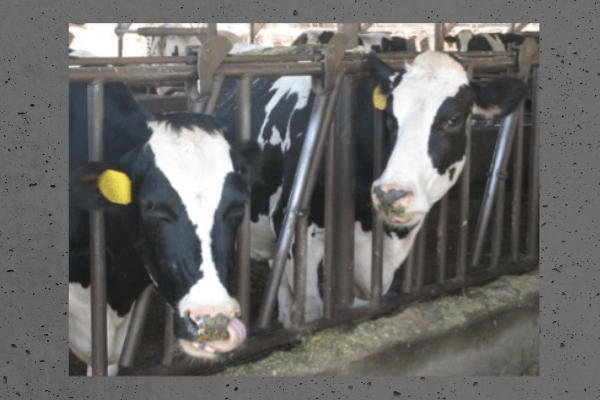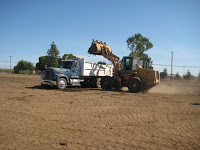
Harvest Time
It’s harvest time on our dairy farm. Time to reap the corn of our labors.
The irrigation pumps have been turned off for several weeks now–a respite before harvest–just enough time to get the corrals ready for winter. Time to scoop up the dry manure and pile it up for other uses on the dairy, such as bedding for the cows and fertilizer for the fields.
We also grade the dirt and gravel roads on our property so they remain driveable once they get wet. No concrete and black top around here (though it sure would be nice).
This old grader still runs. It belongs to one of our neighbors, who lends it to us whenever we need it. Can’t get much better than that.
Now that the corn we planted in May is mature and the ground is dry, a custom harvester (chopper)comes in to cut and chop it. Trucks collect the chopped corn that blows from the harvester’s chute.
Nothing like the smell of fresh-cut corn (a pleasant, slightly vinegary smell) and the whining, grinding, and churning of a crop coming in that has taken so much time, labor, and money to bring to maturity.
The trucks dump the chopped corn into the silage pit, where a tractor pushes it up and packs it to decrease air pockets.
The corn stubble is tilled into the soil by tractors pulling disks (and later rollers), which work up the fields three or four times until they’re ready to plant with oats.
Two crops a year, 250 acres of corn (planted late spring and harvested in the fall) and 400 acres of oats (planted late fall and harvested in the spring), all made into feed for our cows.
The silage pits are sealed with polyethylene plastic and topped with old tires to produce an air-tight structure.
Time to let the corn ferment anaerobically (without oxygen).
In three weeks, the silage is ready to put into a feed truck to be mixed with cotton seed, alfalfa hay, almond hulls, corn gluten, rolled corn, and mineral pellets.
Large augers inside the box of the feeder truck churn the ingredients into a “Total Mixed Ration” (TMR).There’s a discharge door on the side of the feed box (not shown here) that unloads the feed to the cow mangers twice a day
Happy Cows
The milk cows eat about sixteen ton and the (non-milking) replacement heifers eat about ten ton of TMR a day, for a total of 26 ton.
How would you like to feed such a large, hungry crowd, turning hungry cows into happy cows?
Providing the fluid milk and milk products (cheese, ice cream, butter, yogurt, cottage cheese, butter, and cream) on your grocery shelves is a complicated process that involves risk, hard work, commitment, and devotion.
Harvesting our corn crop is just a small part of that process.
However, if the crop fails, it’s like experiencing a blowout while cruising down the freeway at 70 MPH–without a seat belt. Although all the other parts of your car may be functioning at peak performance, the results can be devastating.
Now, we’re hoping to get all the corn harvested, the ground tilled, and the oats planted before winter’s heavy rains. Mother Nature always keeps us on our toes.
Hope you enjoyed seeing the other side of this writer’s life. Thanks for stopping by.








